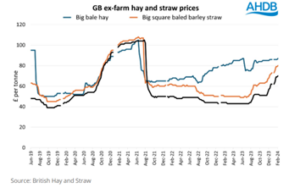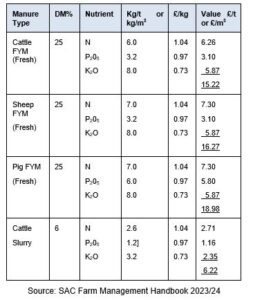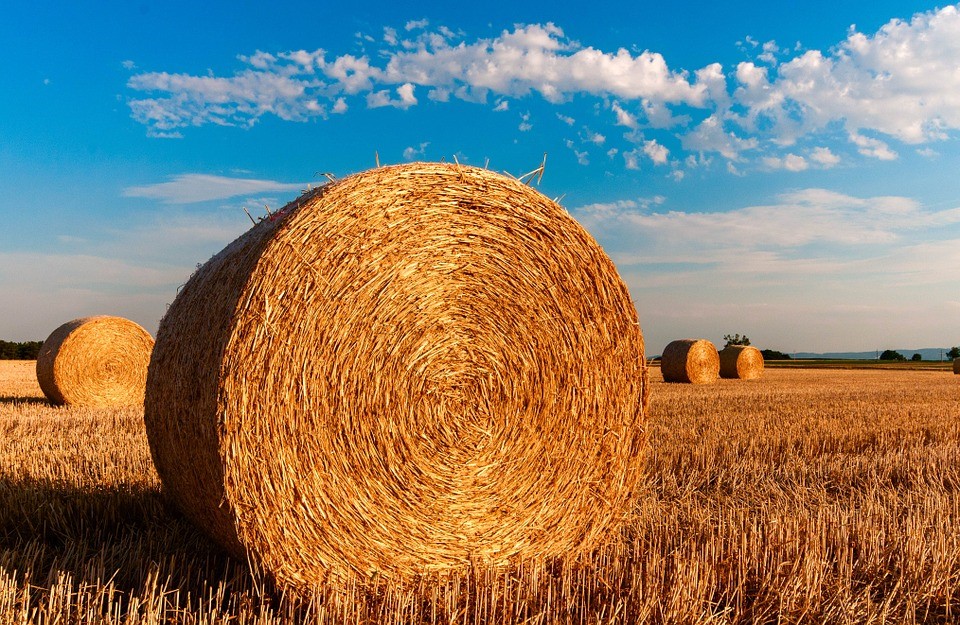Agribusiness News April 2024 – Sector Focus: Straw & Muck
1 April 2024Straw Market Update
Unlike most other farm inputs, straw did not suffer the same inflationary price rises in 2022/23. However, with the wet summer, autumn last year and the continuing wet weather over the winter, straw prices have increased significantly, with reports now suggesting that straw prices in 2024 could be higher than those witnessed in 2020/21. Which for those farmers who buy in a lot of straw, is a real concern.

Wet Weather is Taking its Toll
A dry harvest with favourable weather in 2022 created an incentive for arable farmers to bale straw resulting in the availability of plenty good quality straw for livestock farmers. However, with last year’s wet weather and wet ground conditions delaying the establishment of the next crop, coupled with increased fertiliser costs led to large amounts of straw being chopped and returned to the soil.
The continued wet weather, especially in the south of England, is also affecting spring field work, which is likely to result in a reduced straw harvest for 2024. However, it is not only the arable sector that is affected as the wet weather and wet ground conditions are hindering stock turnout to grass. This extended need for bedding has led to farmers in some areas opting to use hay for bedding.
Fodder Sales
Markets holding fodder sales across the country are reporting high demand for straw with demand outstripping supply. Aberdeen & Northern Marts fodder sale in mid-March (15.03.24) saw 4ft inside spring barley straw bales sold for £24 per bale – an increase of £7 per bale from their January sale. Merchants south of the border are reportedly paying approx. £20/t more on average compared to this time last year.
With carrot growers already actively looking to source straw ahead of the growing season, livestock farmers are advised to source straw ahead of winter housing 2024, to avoid challenges faced by higher straw prices and the reduced availability predicted.
High straw prices may lead to farmers looking to straw alternatives for bedding. However, the nutrient value of FYM should not be overlooked.
FYM is often an undervalued resource
While the nutrient values of artificial fertilisers are readily obvious by how they are named e.g. 20.10.10, the nutrient value of organic fertilisers is often overlooked. Organic manures are a valuable source of N, P & K, trace elements and organic matter. The table below highlights the nutrient and monetary value of cattle, sheep, and pig FYM, with the cattle slurry data highlighting the value of the straw in FYM.

A further benefit of using organic manures is that approximately 1/5th of the nutritional value of the Nitrogen in both FYM and slurry will be available in the next growing season, dropping to 1/10th of the value in the third growing season after application. Although these residual values will be relatively small, every little helps both technically and financially.
Sign up to the FAS newsletter
Receive updates on news, events and publications from Scotland’s Farm Advisory Service

